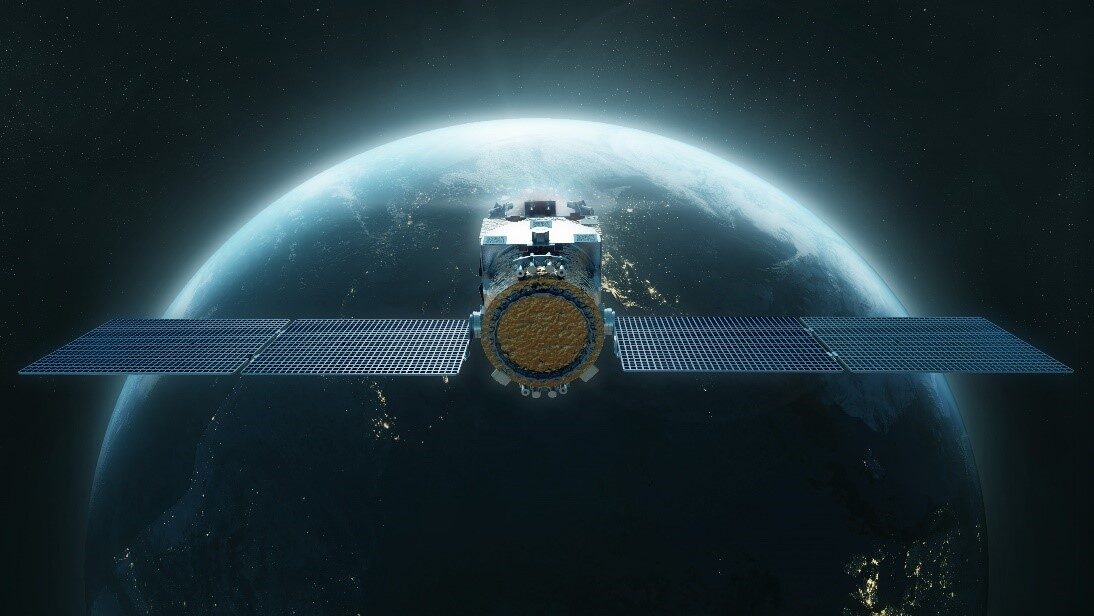THERESA HITCHENS

The Space Force needs to begin now to establish a strategy and develop technology to secure cislunar space and the moon to block a Chinese takeover — and additional investment and personnel to do so, asserts a new paper by the Mitchell Institute.
The Mitchell Institute paper, “Securing Cislunar Space and the First Island Off the Coast of Earth, advocates that from now on, Congress bolster the Space Force’s budget by “about” $250 million annually and “increase end strength by approximately 200 personnel for the new responsibilities associated with emerging national interests on the moon and the cislunar region.”
The study’s author, Mitchell Senior Fellow Charles Galbreath, was quick to stress during a roll out of the new paper that he is not pushing for placing weapon systems in the cislunar domain.
“None of these capabilities that I’m advocating for are weapons, and I’d like to keep it that way,” he said today. “By having the military involved, it’ll send a strong signal of the nation’s commitment and will help deter irresponsible or reckless behavior as the military has done numerous times before. It can make additional investments to accelerate subsequent civil and commercial activity.”
Galbreath argued that the US cannot assume that peaceful activities in the domain will be possible without military back-up, largely because of China’s “territorial” ambitions for the moon.
“We wish we could solely focus on peaceful civil and commercial efforts, but history has shown, and recent events in the Red Sea and South China Sea have reinforced, the need to secure and assure access to areas that should be considered international commons,” he said. “We should expect that China will treat the moon and other regions in space territorially, as they have demonstrated time and time again in the island chains of the Western Pacific.”
The US military’s latest Unified Command Plan establishes that the area of responsibility for US Space Command stretches beyond Earth orbit, in principle, to infinity. More recently, the Joint Staff issued new doctrine for US military space operations, Joint Publication 3-14, obtained by Breaking Defense that clearly articulates for the first time that SPACECOM’s patch stretches into “exgeosynchronous” orbit — that is, beyond about 36,000 kilometers (about 19,000 nautical miles) — to include cislunar space, lunar orbit and the Earth-moon Lagrange points.
Galbreath said that national security concerns include the potential for “hostile spacecraft” to use lunar gravity to “reenter into a geocentric regime with little or no warning in a domain where we have virtually no domain awareness” — a reference to Pentagon fears that China has developed a fractional orbital bombardment system (FOBS) capable of releasing an armed hypersonic glide vehicle in the atmosphere to attack the US mainland.
Another concern for the entire US government, he said, is that there is a lack of law and norms of behavior for activities around and on the moon, including for extraction of resources such as water, ice and minerals — lacuna that could lead to conflict.
“The moon is the goal of the race among spacefaring nations once again, that’s why the cislunar region, the physical space in and around the moon is so important now,” Galbreath said. “Today, multiple nations and commercial entities are seeking scientific security and economic rewards associated with key regions on the moon, and rare minerals from the moon.”
It is clear from “speaking with several senior Space Force officials” that the service does see protecting and securing the cislunar domain as part of its remit, he said. “But they also view this as a problem for tomorrow and lack the resources to pursue it now. Instead, they must focus their limited resources on preparing for the fight tonight. And I can’t argue with that; they actually have to marshal their resources where they can best provide an impact.”
Until recently, Space Force and Defense Department investment in cislunar activities has been largely limited to early-stage research via Air Force Research Laboratory and DARPA respectively, primarily focused on space domain awareness in the region.
Last year, the Space Force expanded its efforts to focus on technologies that would allow spacecraft greater mobility and range under a basket of efforts called “space mobility and logistics” or “dynamic space operations.” The service’s primary acquisition command, Space Systems Command, last spring established a new mission area called Space Access, Mobility and Logistics; and Congress granted the service $30 million in extra funds.
The service in turn turned over $26 million to the Space Enterprise Consortium (SpEC) to dole out in awards to commercial companies pursuing capabilities for on-orbit refueling, propulsion systems enabling rapid and long-term spacecraft mobility, on-orbit servicing and space debris mitigation. SpEC in September awarded $25.5 million to the American arm of Japanese startup Astroscale, Astroscale US, to develop a prototype refueling spacecraft. In a press release issued today, the company said it is investing another $12 million in developing the refueling bird, which will be able to gas up other “compatible” satellites, for delivery to the Space Force in 2026.
No comments:
Post a Comment